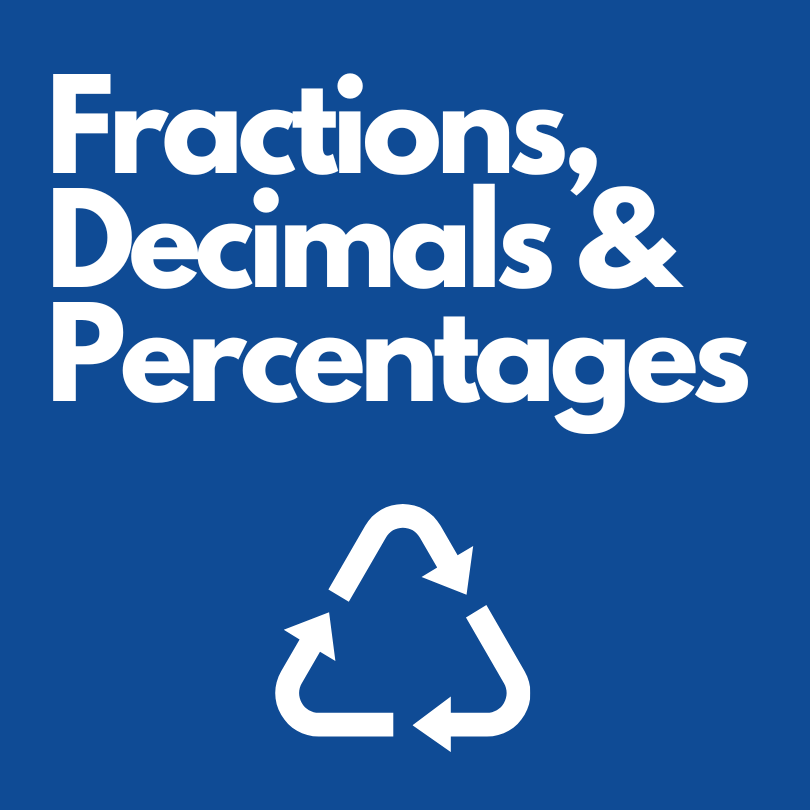Percent to Decimal Calculator
Convert a percentage value to a decimal number
Related Fraction, Decimal & Percent Calculators
See all maths calculators
Percent to Decimal Converter Guide
The Percent to Decimal Converter is a useful tool that allows you to quickly and accurately convert percentage values into their equivalent decimal forms. This comprehensive guide will walk you through the process of using such a converter, explain the concepts behind percent-to-decimal conversion, provide practical examples, and offer insights into common pitfalls and real-world applications.
Understanding Percentages and Decimals
Before diving into the conversion process, let's clarify some key concepts:
Percentages
A percentage is a way of expressing a number as a fraction of 100. It is denoted by the symbol %. For example, 50% means 50 out of 100, or half of a whole.
Decimals
A decimal is a way of writing fractions whose denominators are powers of ten. For example, 0.5 is equivalent to 5/10 or 1/2.
Converting Percentages to Decimals
The process of converting a percentage to a decimal is straightforward:
- Remove the percent sign (%)
- Divide the number by 100 (or move the decimal point two places to the left)
For example, to convert 75% to a decimal:
75 ÷ 100 = 0.75
Examples of Percent to Decimal Conversions
Let's look at a table of examples:
| Percentage | Conversion Process | Decimal Result |
|---|---|---|
| 100% | 100 ÷ 100 | 1.0 |
| 50% | 50 ÷ 100 | 0.5 |
| 25% | 25 ÷ 100 | 0.25 |
| 10% | 10 ÷ 100 | 0.1 |
| 5% | 5 ÷ 100 | 0.05 |
| 1% | 1 ÷ 100 | 0.01 |
| 150% | 150 ÷ 100 | 1.5 |
| 0.5% | 0.5 ÷ 100 | 0.005 |
Common Mistakes to Avoid
When using a Percent to Decimal Converter, be aware of these common pitfalls:
-
Forgetting to remove the percent sign: Make sure you don't include the % symbol in your calculation.
-
Moving the decimal point in the wrong direction: Remember, you're dividing by 100, so the decimal point moves left, not right.
-
Confusion with fractions: Don't confuse percentages with fractions. 1/2 is 50%, not 0.5%.
-
Mishandling percentages over 100%: Remember that percentages can be greater than 100%, resulting in decimals greater than 1.
-
Rounding errors: Be careful with rounding, especially for precise calculations.
Practical Applications
Understanding how to convert percentages to decimals has numerous real-world applications:
Finance and Investing
Interest rates, tax rates, and investment returns are often expressed as percentages but used in calculations as decimals.
Example: If a bank offers a 2.5% annual interest rate, you would use 0.025 in your calculations.
Statistics and Data Analysis
Many statistical measures are expressed as percentages but used in decimal form in calculations.
Example: If 75% of survey respondents answered "Yes", you would use 0.75 in probability calculations.
Science and Engineering
Many scientific and engineering calculations involve converting percentages to decimals.
Example: If a solution is 12% salt by weight, you would use 0.12 in concentration calculations.
Retail and Sales
Discounts and markups are often given in percentages but applied as decimals.
Example: A 20% discount is equivalent to multiplying the original price by 0.8 (1 - 0.2).
Real World Analogies (RWA)
To better understand percent to decimal conversions, consider these real-world analogies:
-
Academic Grading:
- If a student scores 85% on a test, their decimal grade would be 0.85.
- In a class where 95% is an A, the decimal threshold for an A would be 0.95.
-
Battery Life:
- If your phone battery is at 60%, it's at 0.6 of its full charge.
- When a device warns of low battery at 15%, it's referring to 0.15 of full capacity.
-
Cooking and Nutrition:
- If milk is 3.25% fat, it contains 0.0325 parts fat by volume.
- When a recipe calls for 75% lean ground beef, it's asking for meat that is 0.75 lean and 0.25 fat.
-
Sports Statistics:
- A basketball player with an 80% free throw percentage has a 0.8 probability of making a free throw.
- If a team wins 55% of their games, their winning ratio is 0.55.
These real-world analogies help to ground abstract percent-to-decimal conversions in concrete, everyday situations, making them easier to understand and remember.
Using Technology: Percent to Decimal Converters
While it's important to understand the manual process, Percent to Decimal Converters can quickly perform conversions, especially for complex percentages. When using such converters:
- Verify the input format required by the converter (e.g., whether to include the % symbol).
- Double-check your entries for accuracy.
- Understand the output format provided by the converter (number of decimal places).
- Use the results judiciously, especially in professional or academic contexts where showing your work may be required.
The Importance of Understanding Percent to Decimal Conversions
Converting percentages to decimals is a fundamental skill that extends beyond simple arithmetic. It's crucial for many fields including finance, statistics, science, and everyday calculations. By mastering these conversions, you enhance your numerical literacy and problem-solving skills.
Conclusion
Using a Percent to Decimal Converter to change percentage values into their corresponding decimal forms is a valuable skill that enhances your ability to work with numerical data. Whether you're a student, a professional, or simply someone who enjoys working with numbers, understanding this process can improve your mathematical capabilities and practical problem-solving skills.
Remember, while converters are powerful tools, understanding the underlying concepts is crucial. Practice manual conversions alongside using the converter to develop a deep understanding of the relationship between percentages and decimals.
Key Takeaways
- Understand that a percentage is a way of expressing a number as a fraction of 100.
- To convert a percentage to a decimal, divide by 100 or move the decimal point two places to the left.
- Be aware of common mistakes such as forgetting to remove the percent sign or moving the decimal point in the wrong direction.
- Recognize the practical applications in finance, statistics, science, and retail.
- Use real-world analogies to better understand and remember percent-to-decimal conversions.
- While converters are helpful, understanding the manual process is crucial for developing mathematical intuition.
- Remember that percentages can be greater than 100%, resulting in decimals greater than 1.
By mastering percent to decimal conversions, you'll have a powerful tool at your disposal for understanding and working with numerical data in various real-world scenarios.

